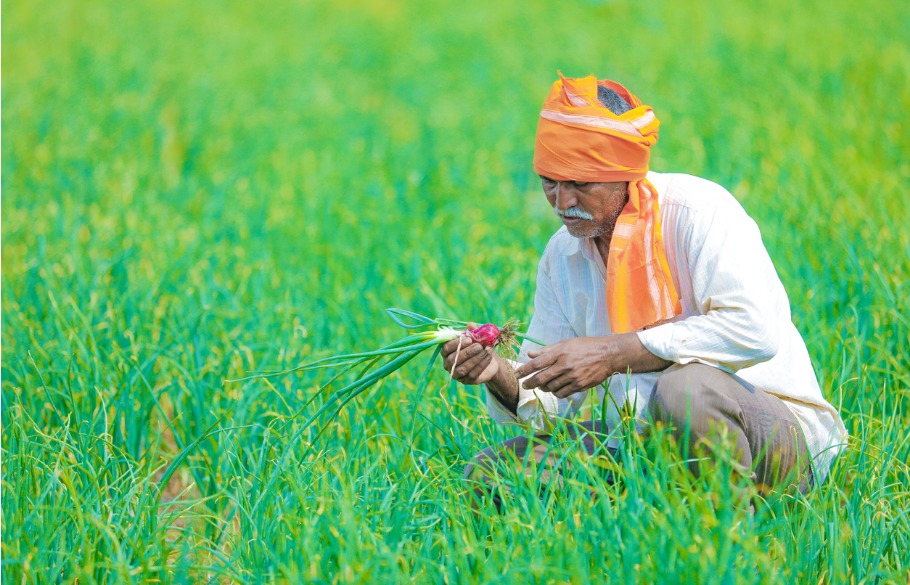

Burden of farm expense has increasingly passed from Centre to states
Of the total public expenditure in agriculture, the Centre’s share fell from 50% to 37% between FY11 and FY20, while the states’ increased from 50% to 63%

Fiscal federalism and Centre-state financial relations have always been a hotly discussed topic, with sharper debates arising in recent times. The total burden of public expenditure on the Central exchequer as a share of gross domestic project (GDP) has declined over the past decade, while the burden on states’ exchequers has gone up.
An analysis of data pertaining to public expenditure by the Central and state governments from 2010-11 to 2019-20 shows that Centre-state relations have strained significantly with respect to agriculture — the sector that supports the majority of the population in India. The analysis was undertaken by the Foundation for Agrarian Studies (FAS) and led by Professor R Ramakumar from the Tata Institute of Social Sciences, Mumbai.
Falling share of the Centre
The analysis clearly shows the burden shifting away from the Union government. Of the total public expenditure in agriculture, the Centre’s share fell from 50 per cent to 37 per cent while the states’ increased from 50 per cent to 63 per cent between 2010-11 and 2019-20. In other words, while the total expenditure was shared equally between the Centre and States a decade ago, state governments are now funding nearly two-thirds of the total agricultural expenditure in India.
The ratio of public expenditure to the output of a particular sector is a widely-used metric to assess the importance given by the government to that sector. In agriculture, this metric is measured by dividing government expenditure in agriculture by the gross value added in agriculture (or Agricultural GVA). This ratio for the Central government has declined sharply from 10 per cent to 7 per cent during the said period.
The states have been forced to compensate for this decline by increasing their ratio from 10 per cent to 12 per cent. Despite this shift in burden towards the states, the ratio for total public expenditure (that is adding Centre’s and states’ expenditures) fell from 20 per cent in 2010-11 to 19 per cent in 2019-20.
Three pointers to declining importance
The story remains the same if we look at different components of the Centre’s agricultural expenditure. Specifically, three illustrations present the declining importance accorded by the Centre to agricultural development. First, the Centre allocates funds to state governments to execute schemes it has approved under the head of “Grants-in-aid”. These allocations for the agricultural sector have almost halved (from 0.67 per cent to 0.37 per cent as a share of Agricultural GVA) between 2010-11 and 2019-20.
Also read: Andhra, Bengal, Odisha among ‘Star States’ in governance ranking
Secondly, fund allocations for the Mahatma Gandhi National Rural Employment Guarantee Scheme (MGNREGS) have dropped. Expenditure under this head as a share of Agricultural GVA has also fallen, albeit marginally, from 2.71 per cent to 2.2 per cent between 2010-11 and 2019-20.
We must remember that this was also the period when the dependence on MGNREGS work had increased substantially due to a worsening rural crisis. Since states bear the responsibilities of implementing and catering to the demand for MGNREGS, the stagnation in the share of MGNREGS allocation has resulted in increased administrative burden on state governments.
Thirdly, there has been a reduction in expenditures towards agricultural research, extension and training services. The share of Central expenditure in agricultural research reduced from 0.41 per cent of Agricultural GVA in 2010-11 to 0.23 per cent in 2019-20. For extension and training, the reduction was from 0.2 per cent to 0.06 per cent.
The Centre, by virtue of resources and the hierarchical set-up of the national research system, has historically taken leadership in expanding public research and extension services. Therefore, inadequate importance given to public research and extension services by the Centre would have a cascading effect on states’ capacity to improve their own research and extension services.
Also read: Indian textbooks are full of regressive ideas but Maharashtra shows the way
Centralisation of fiscal space
The shifting burden and the Centre’s neglect of key sectors within agriculture are happening against the backdrop of severe centralisation in the fiscal space. The states’ taxation powers have been severely compromised by the implementation of the Goods and Services Tax (GST) regime. The promised GST compensation to states is constantly being delayed and the Centre has been virtually making unilateral decisions on GST rates, especially during elections.
Apart from this, the Centre has increased indirect taxes in the form of cesses and surcharges. These fall outside the ambit of the divisible pool, the kitty of resources from which 42 per cent is distributed among all states.
To add further pressure at a time when states are forced to increase their expenditures, the Centre has been asking states to adhere to stricter thresholds of fiscal deficit under the Fiscal Responsibility and Budget Management (FRBM) Act, implying further constraints for borrowing by states.
The deepening rural crisis is posing new challenges for development. The situation of shifting the burden in agriculture expenditure, in the context of curtailing the financial rights of the states, would lead to an unfavourable situation for agricultural development. It is high time the Centre took substantiative measures to respect the financial rights of the states and provided sufficient attention to specific sectors to improve the agricultural and rural scenario in the country.
(The writer is a research scholar at the Centre for Development Studies, Thiruvananthapuram, and a research collaborator of the Foundation for Agrarian Studies)


